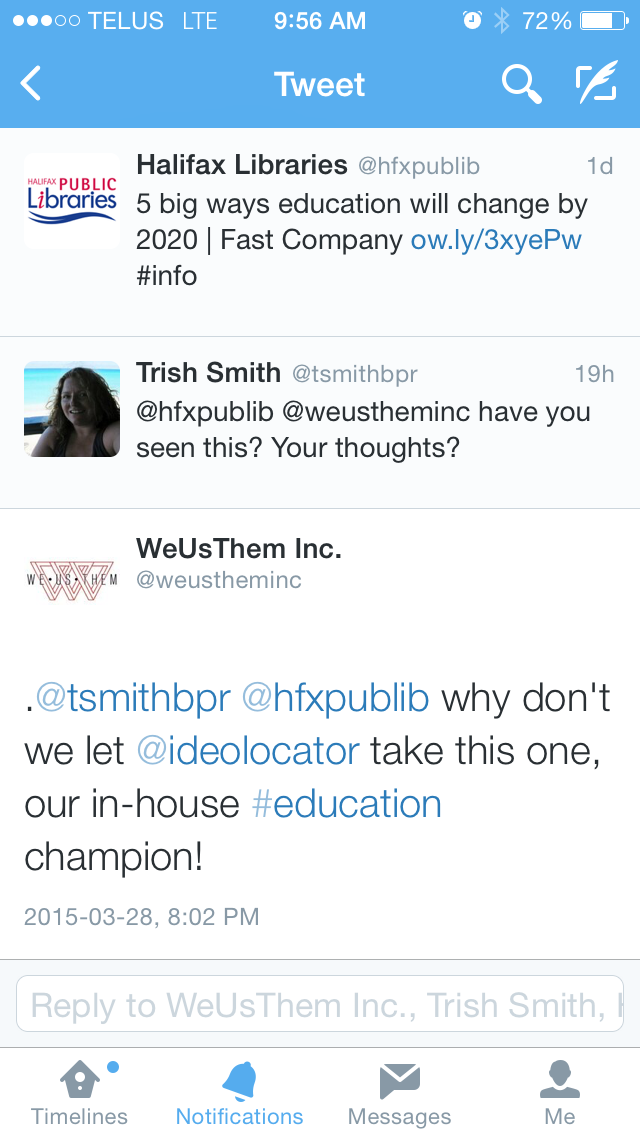I’m not one to pick the battle between whether leadership can be taught or is innate, but I do think leadership can be nurtured. The earlier the better.
The more natural leadership is as organic behaviour patterns than learned practical exercises, the better.
The concern I have is that leadership has been made into this mythological style that one needs to be either trained in or born with, when, realistically speaking, it’s not that hard of a concept to grasp.
Yes, for a guy that talks about leadership a lot, gets on the circuit and does talks on the subject, I'm telling you this isn't hard.
I find it ironic that leadership was about how a leader led his or her people and yet we believe there is a magical formula that we all need to learn that will make us natural born leaders. Leadership is unique to the individual, unique to the people you lead and unique to the environment you are in. It is not a strict set of guidelines that you follow or study that makes you a good or a bad leader.
At times I equate leadership to humanity and being a person above all else. Don't get me wrong, I'm not asking you to hug trees, I'm not that person, but I am the one who says being a Manager alone is not enough.
And I will also say that being a Leader is not always about making the easy calls that makes everyone happy. In fact some of our greatest leaders have had to make some of the toughest decisions, at times impacting the lives of those they lead.
Leadership is more than just softening Management and the traditional hierarchy. It’s about an approach, about how you believe you want to show up and work with people around you. It is about being tough yet human. It is about being inclusive, yet knowing when to make the decision. It is about having fun but getting the job done. It is about engendering thoughts, new ideas and creativity, all the while keeping an eye on your objectives.
Leadership is one of the biggest contradictions in organizational and personal styles one can have. Yet it works. Perhaps it is because we are contradictions in our own lives and in our own ways that this fits so well.
Find your own contradictions, find your own style. It will drive you further than you ever have. Challenges, opportunities, and all.
The more natural leadership is as organic behaviour patterns than learned practical exercises, the better.
The concern I have is that leadership has been made into this mythological style that one needs to be either trained in or born with, when, realistically speaking, it’s not that hard of a concept to grasp.
Yes, for a guy that talks about leadership a lot, gets on the circuit and does talks on the subject, I'm telling you this isn't hard.
I find it ironic that leadership was about how a leader led his or her people and yet we believe there is a magical formula that we all need to learn that will make us natural born leaders. Leadership is unique to the individual, unique to the people you lead and unique to the environment you are in. It is not a strict set of guidelines that you follow or study that makes you a good or a bad leader.
At times I equate leadership to humanity and being a person above all else. Don't get me wrong, I'm not asking you to hug trees, I'm not that person, but I am the one who says being a Manager alone is not enough.
And I will also say that being a Leader is not always about making the easy calls that makes everyone happy. In fact some of our greatest leaders have had to make some of the toughest decisions, at times impacting the lives of those they lead.
Leadership is more than just softening Management and the traditional hierarchy. It’s about an approach, about how you believe you want to show up and work with people around you. It is about being tough yet human. It is about being inclusive, yet knowing when to make the decision. It is about having fun but getting the job done. It is about engendering thoughts, new ideas and creativity, all the while keeping an eye on your objectives.
Leadership is one of the biggest contradictions in organizational and personal styles one can have. Yet it works. Perhaps it is because we are contradictions in our own lives and in our own ways that this fits so well.
Find your own contradictions, find your own style. It will drive you further than you ever have. Challenges, opportunities, and all.






